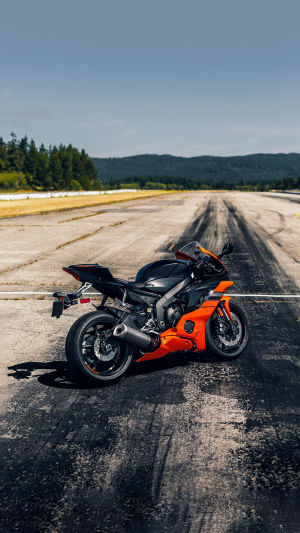Motorcycles, powered by internal combustion engines and steered via handlebars, are agile, swift vehicles widely used for patrols, cargo transportation, and sports.
Categorized broadly as street bikes, road racing motorcycles, off-road bikes, cruisers, and tourers, Japan's motorcycles from Honda, Yamaha, Suzuki, and Kawasaki indisputably set the global standard.
These top brands firmly dominate the majority of the global motorcycle market due to their superior quality products.
The development of Japan's motorcycle industry stems not only from the manufacturers' technical expertise but also from the prevalent motorcycle culture. With Japan's pervasive motorcycle enthusiasm, sightings of motorcycles are common on regular roads, scenic routes, and even highways.
Currently, Japanese motorcycles hold a significantly high market share globally, nearly dominating the markets of Europe and America, with Southeast Asia's share reaching as high as 90%. Amidst these four major brands, the debate over whose motorcycles are superior persists. There's a saying: "Suzuki is hard to repair, Kawasaki is as fast as flying, Honda is unbreakable, Yamaha is unaffordable." Honda, despite considerable controversy, stands undisputedly as the leader in market share and technological advancements.
1. Honda: Dominating the motorcycle industry since its establishment in 1948, Honda became the world's largest motorcycle manufacturer by 1959. Renowned for reliability, stable quality, and fuel efficiency, Honda's CB400 is widely recognized as a "legendary bike." In high-end racing, Honda previously dominated world motorcycle championships and pioneered various new technologies, such as hybrids, autonomous driving, and touchscreens, making Yamaha its recent challenger.
2. Yamaha: Renowned for its musical instruments, Yamaha entered the motorcycle industry in 1955. With a focus on aggressive high-displacement racing bikes, Yamaha, though slightly less diverse than Honda, captivates riders with its melodious exhaust notes. Notably, the Fazer 250 is a famous touring motorcycle, claiming a range of 1000 km per tank.
3. Suzuki: Entering the motorcycle industry in 1952, Suzuki excels in providing high-value motorcycles. While trailing behind Yamaha and Honda in features, Suzuki's commuter motorcycles are durable, fuel-efficient, and budget-friendly. Their high-end model, the Hayabusa, boasts an output of 190 horsepower, a dream machine for many motorcycle enthusiasts.
4. Kawasaki: With a smaller scale compared to other brands, Kawasaki's motorcycle business within the Kawasaki Heavy Industries group is reminiscent of Alfa Romeo in the automotive industry. Focused on performance motorcycles without joint ventures in China or smaller displacement bikes, Kawasaki's aggressive industrial design is distinct. Notably, the H2, recognized among motorcycle enthusiasts for its power, embodies Kawasaki's innovative design and decent durability.
In the realm of motorcycles, Japan's Honda, Yamaha, Suzuki, and Kawasaki continue to reign supreme, each brand weaving its unique narrative of reliability, innovation, and distinctiveness.
As these giants navigate the global market, their legacy persists, shaping the way we perceive and experience motorcycles. From Honda's unyielding dominance to Yamaha's melodic allure, Suzuki's value proposition, and Kawasaki's performance-driven ethos, these brands epitomize excellence.
With each rev of the engine, they echo a legacy of craftsmanship and technological advancement. As the roads hum with the resonance of their machines, the influence of these Japanese motorcycle titans remains an indelible mark in the world of motorcycling.





